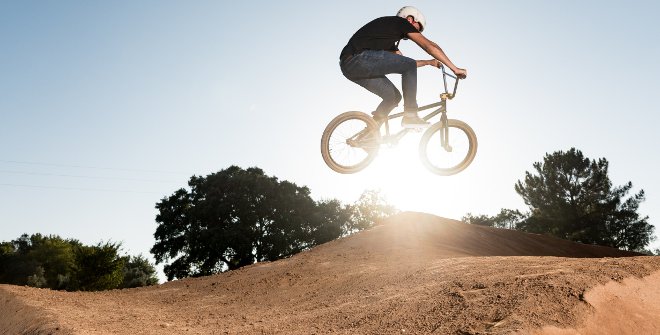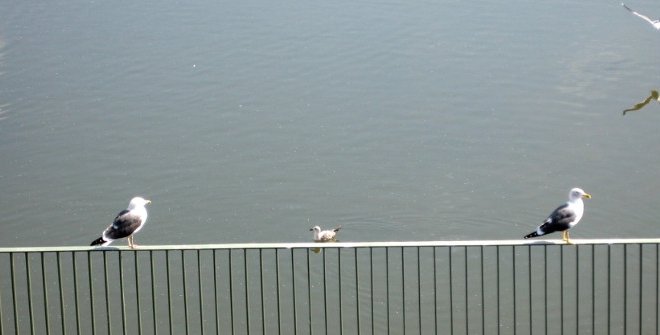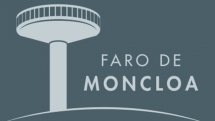Madrid Río
A green area for sports and leisure on the banks of the River Manzanares
 puente_madrid_rio.jpg
puente_madrid_rio.jpg playa_madrid_rio.jpg
playa_madrid_rio.jpg bmx_madrid_rio.jpg
bmx_madrid_rio.jpg madrid_rio_3.jpg
madrid_rio_3.jpg ocioyculturamadridrioparqueconninos_1401266424.858.jpg
ocioyculturamadridrioparqueconninos_1401266424.858.jpg NuevosiconosarquitectonicosMadridRioMataderoMadrid_1401266877.008.jpg
NuevosiconosarquitectonicosMadridRioMataderoMadrid_1401266877.008.jpg PasilloverdeMadridRioPuentedeToledo_1401266966.206.jpg
PasilloverdeMadridRioPuentedeToledo_1401266966.206.jpg

- Newly developed area
- New architectural highlights
- Green corridor
- Sports
- Leisure and culture
- Shopping, drinking and eating
Madrid Río is one of Madrid’s major ecosystem-rebalancing projects. Part of the busy M-30 ring road running parallel to the River Manzanares was buried underground, which resulted in a vast 10km-long park that both locals and out-of-towners can enjoy.
The renovation of the spaces freed from traffic has helped Madrid recover the river. But the project goes beyond that, since tearing down a section of the M-30 meant removing an obstacle that had separated the southern districts from the centre for long.
Inaugurated in April 2011, Madrid Río covers nearly 700ha of restored land. The banks of the river and the surrounding area are filled with a wide range of recreational facilities and attractions that revolve around four themes – new architectural highlights, green corridor, sports, and leisure and culture.
The Manzanares River has undergone a restoration process, which represents a migratory fauna corridor moving between the parks in the north west of the city, such as Casa de Campo, Western Park, El Pardo, and those in the south east, such as Manzanares South and Tierno Galván Park. It acts as an open communication axis for birds and animals that travel by night.

The restoration has benefitted the flora and fauna of the area, where water quality has improved, the natural dynamics of the river has been recovered, causing fish to breed once more in the river; and the growth of vegetation in the riverbed offers a habitat and shelter for birds and amphibians.
Designed by architect Dominique Perrault, the Arganzuela monumental footbridge is the gem of the park. It’s a 274m-long structure that links Paseo de Yeserías with Avenida del Manzanares. Cone-like in structure, its two sections have two interlocking metal spirals and provide direct access to the Parque de la Arganzuela below. The place is remarkably beautiful when the sun goes down and the lights of the tree-like lamp posts illuminate the interior of the bridge.
Another of the most unusual spots in this area is the city beach. It consists of three oval-shaped water features with three different effects: a still body of water, jets that spurt water to different heights, and a mist of water spray. In summer – its use is restricted to this season with fountains in operation from 11am to 9pm in summer – when the temperatures soar, it's a perfect place to cool off and have fun, especially with the little ones.

The Invernadero and Matadero twin vaulted footbridges stand across the facilities bearing the same names. They were decorated by Daniel Canogar with recycled glass tiles depicting local residents.
Other remarkable sights are the Oblicuo bridge, a stretch from the old M-30 road recovered for pedestrians, and the Principado de Andorra bridge, built of iron and featuring three Y-shaped arms.
Located on the esplanade of Puente del Rey in Madrid Rio we find a giant glass sculpture standing almost three metres high and twelve metres long. The letters of Madrid Rio is a sculptural piece that forms the word ‘Madrid’ and the iconic Bear and Strawberry tree made out of recycled glass packaging, paying tribute to the people of Madrid and their environmental awareness.
Madrid Río is a green corridor that runs for more than 10km along the banks of the River Manzanares, from El Pardo in the north to Getafe in the south. It connects other green spaces in the city such as Casa de Campo, Jardines del Campo del Moro where you can see beautiful peacocks, Parque de San Isidro, Parque Lineal del Manzanares and Parque EnriqueTierno Galván. The parks listed below are to be found within Madrid Río:
La Arganzuela is the largest landscaped garden in Madrid Río, spanning 23ha. Within the park are interesting sights like the Arganzuela monumental bridge, the urban beach, the jungle of tree trunks, the hill with slides and the skatepark.
SALÓN DE PINOS
Salón de Pinos is a 6km-long tree-lined walkway that runs along one alternate banks of the river.
HUERTA DE LA PARTIDA
A fruit tree nursery next to Casa de Campo, Huerta de la Partida has retained the splendour it had in the sixteenth century, when it was the orchard used by the residents of the Vargas Palace.
Smaller parks and gardens like Jardines Aniceto Marinas, Parque de la Virgen del Puerto, Jardines del Puente de Segovia, Jardines del Puente de Toledo and Parque del Matadero complete the green corridor.
This park, located around Doce de Octubre (Usera), is one of the most interesting architectural designs from the 90s as it recovers the natural context and the traditional use of these Mediterranean gardens. The vegetable gardens, olive trees and the river’s natural course are the setting for Caja Mágica, a High-Performance Tennis Centre and the Mutua Madrid Tennis Open headquarters, designed by Dominique Perrault.
Madrid Río offers ample opportunities for sports. It has a 30km cycling route, shared by walkers and cyclists, that is linked to the Green Cycling Ring on the north and the south, as well as to other cycle lanes in the city and on the outskirts. Visitors can hire bikes and other sporting vehicles to ride safely along fantastic green trails by the River Manzanares.
Besides running and cycling, in Madrid Río you’ll find a skatepark for skateboarders and roller skaters to ride and perform their tricks; ROC 30, a rock-textured climbing wall and climbing school; BMX tracks; an 11-a-side and two 7-a-side football pitches; multi-sport tracks; paddle tennis courts; tennis courts, a boules playing area and even facilities for rowing and sport fishing.
Madrid Rio has for many years been home to one of the temples of football in our city. It is the Vicente Calderón Stadium, home for more than fifty years to Atlético de Madrid —who now play at the Cívitas Metropolitano Stadium— , which has now been demolished. In its place, an urban development project will transform the area through housing and services. The Parque Atlético de Madrid will also be built here. So, Madrid Rio Park, which was unfinished along this section, can be completed, increasing its area by 51,500 square metres.
Located within La Ermita Shopping Mall is Carlos Sainz Karting Madrid, a combined indoor – outdoor karting circuit with more than 700 meters of rope, one of the best in Europe. This shopping centre will be demolished soon due to the new project to transform the area of Ermita del Santo into a new space for urban regeneration.
In Manzanares Linear Park, there is a multidisciplinary venue known as Caja Mágica designed by French architect Dominique Perrault. It regularly hosts sports, cultural, leisure and corporate shows, both large and small.
Madrid Río is filled with cultural and leisure facilities for people of all ages.
LEISURE
At Madrid Río you’ll find endless photo opportunities, especially from Puente de Segovia or the Arganzuela monumental footbridge. Also, you’ll enjoy wonderful vistas from the two terrific cafés situated on the urban beach and to the south of Puente de Segovia, or the three bars on jetty No. 6, next to the Arganzuela footbridge and close to Calle San Zacarías.
Another popular place to take picture postcard photos is by the The letters of Madrid Rio, a giant glass sculpture located on the esplanade of the Puente del Rey bridge.
The park is an ideal setting for children. They’ll love the 17 play areas designed for them, especially the jungle of tree trunks, the hill with slides and the zip-line.
If you wish to bike along the park, there are plenty of shops around offering bike rentals.
NIGHTLIFE
In Madrid Río it is also possible to listen to live music or dance the night away. La Riviera and Café Ziryab are just some of the venues in the area.
CULTURE
Culture buffs coming to Madrid Río can’t miss Matadero Madrid, a former slaughterhouse built in 1921 and fully renovated to become a space dedicated to contemporary art and culture.
Meanwhile, in recent years the Google for Startups Campus Madrid has been going from strength to strength, a neo-Mudejar building that provides a meeting place for business owners and entrepreneurs. As has the MAD (Madrid Artes Digitales) Centre for Immersive Experiences, a revolutionary centre for digital cultural development, where the latest technology is placed at the service of the most innovative cultural and artistic experiences.
The Calle 30 has been laid underground on both sides of Manzanares River, giving some of the monuments back their original glory. This is the case with Puerta del Rey, Puente del Rey, Ermita de la Virgen del Puerto (Hermitage of Virgen del Puerto), Ermita de San Isidro (Hermitage of San Isidore), where the Fiestas de San Isidro are celebrated from May 11th through 15th), Obelisco de la Castellana, Sacramental de San Isidro, Puente de Segovia, Puente de Toledo bridge, which is home to the sculptures of San Isidro and Santa Maria de la Cabeza, by Juan Ron, is now fully pedestrianised and Puente de los Franceses, close to Parque del Oeste where you can still see remains of three machine-gun bunkers from the Civil War, built in the 1920s.
There are a lot of alternative theatres in Madrid Río, like Lagrada, Teatro La Usina, Ercilla, Cuarta Pared, Artespacio Plot Point and Bululú 2120. And you can also find the Madrid’s legendary children’s theatre, Teatro Sanpol.
You can also visit Cines Embajadores which screens films in their original version with subtitles in Spanish, from big Hollywood hits to the best independent titles in European, Asian, and Spanish cinema as well as the festival circuit. El Águila is an architectural and cultural complex composed of the Joaquín Leguina Regional Library, the Madrid Regional Archive and the Protocol Historical Archive.
In front of the greenhouse of the Arganzuela Glass Palace, in Madrid Río Park, is Corral Cervantes, a cultural space where you can enjoy Spanish Baroque plays and food, as well as various activities for all ages based around the Golden Age.
And in the vicinity of Madrid Río park is ElectricBricks, a store that specialises in Lego, Meccano and Nano Block pieces and, so far, is the largest of its kind in Spain.
This area, bordering with barrio de Usera, is becoming one of the more fashionable areas of Madrid, so a new mall Plaza Río 2, has just been opened, and it is a place that those who wish to do some shopping, should not miss. This area is also one of the best options to eat authentic Chinese food; one of the most famous restaurants is Royal Cantonés and on the other hand Mr. Doulao.
If you wish to try Spanish food, we recommend O'Portiño, Costello Río, Asador El Molinón, El Urogallo or Ferreiro, situated between Paseo de La Chopera and Paseo de la Florida. And if you prefer to have a drink and a snack closer to the river, there is Café del Río which has a large terrace overlooking the Palacio de Oriente, the cathedral of La Almudena and the basilica of San Francisco El Grande. Another good option is the Restaurante OSA, which serves haute cuisine and combines Spanish products with French technique and Japanese sensitivity.

The cultural venue known as Matadero Madrid houses the unique culinary project La Cantina (Matadero Film Library) in a cozy and welcoming atmosphere. Check out our article with recommendations on where to eat out at Matadero Madrid.
In the heart of Legazpi we find the restaurant Kukaramakara, which specialises in preparing typical dishes from the Dominican Republic and is the perfect place to head to after a cultural visit to Matadero Madrid.
-
Map of Tourist Areas (PDF)
-
Running in Madrid
-
Madrid for Kids











